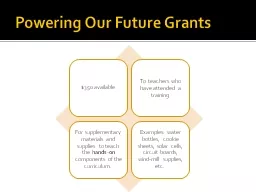PPT-Cold powering test results of MBHSP102
Author : chaptoe | Published Date : 2020-07-04
Gerard Willering TEMSCTF With contributions by Susana Izquierdo Bermudez and Juho Rysti With thanks to Jerome and Vincent and all others from TF for their
Presentation Embed Code
Download Presentation
Download Presentation The PPT/PDF document "Cold powering test results of MBHSP102" is the property of its rightful owner. Permission is granted to download and print the materials on this website for personal, non-commercial use only, and to display it on your personal computer provided you do not modify the materials and that you retain all copyright notices contained in the materials. By downloading content from our website, you accept the terms of this agreement.
Cold powering test results of MBHSP102: Transcript
Download Rules Of Document
"Cold powering test results of MBHSP102"The content belongs to its owner. You may download and print it for personal use, without modification, and keep all copyright notices. By downloading, you agree to these terms.
Related Documents














